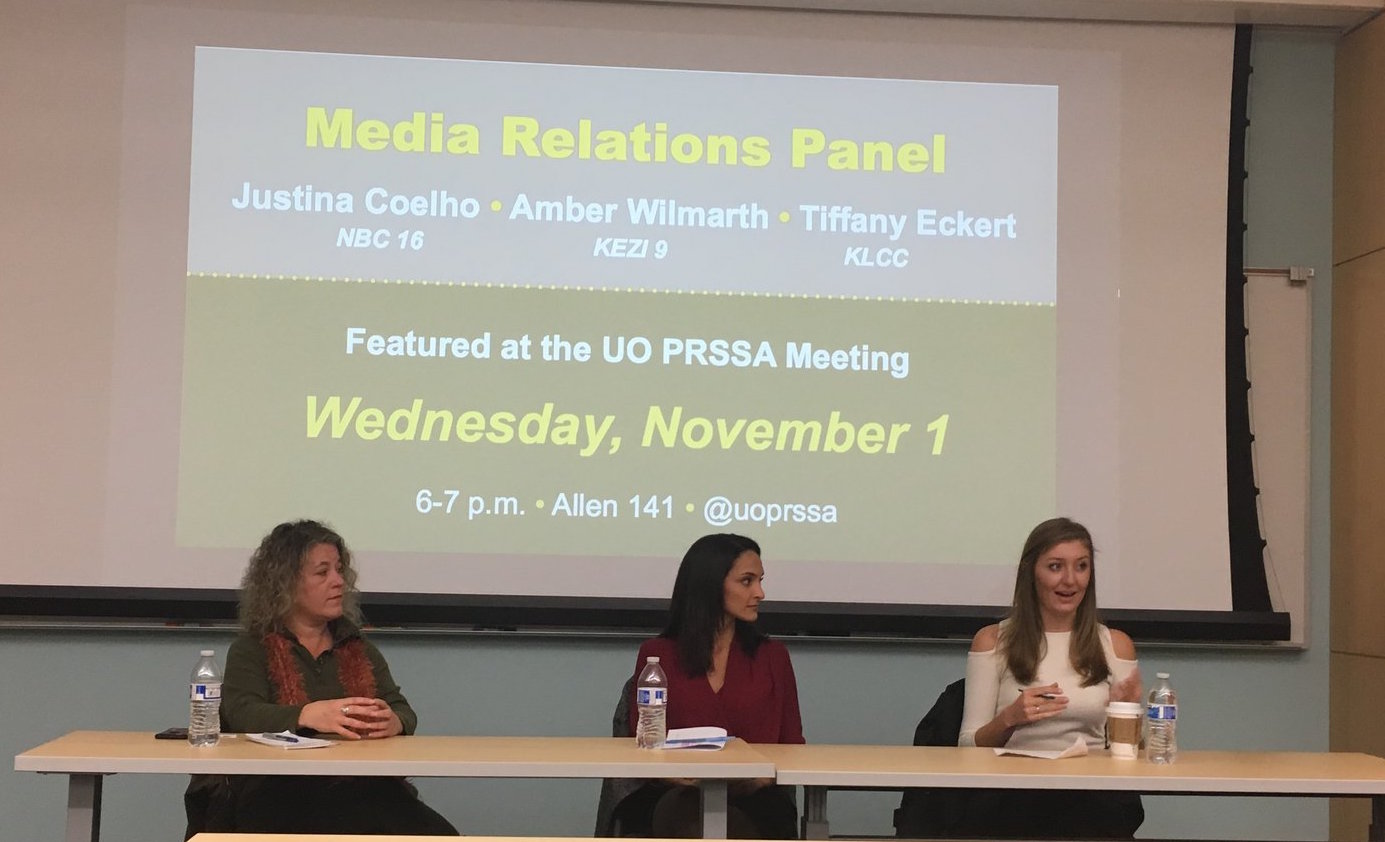Rise of the Robo Reporters!
By Lily Gordon
Earlier this week, the University of Oregon Public Relations Student Society of America hosted a media relations panel featuring three local reporters, Tiffany Eckert of KLCC, Justina Coelho of NBC 16 and Amber Wilmarth of KEZI 9. The panel discussed best practices for PR practitioners to build meaningful professional relationships with journalists, how to avoid typical press release faux pas and tips on getting the coveted feature piece in print or broadcast.
A key theme throughout the evening was the lack of journalists within newsrooms today. There just aren't enough reporters to cover everything that needs to be covered. One solution? Robo reporters. How will a decrease in reporters and increase in content demand affect PR professionals' approach to media relations?
 |
| UO PRSSA's media relations panel on Nov. 1, 2017. // Photo source UO PRSSA |
At one point in the evening, the topic of how to become that PR person a reporter consistently calls was discussed. Ultimately, Eckert said, "We're all just people!" While for KLCC and many other news outlets that may still hold true, an increasing number of publications are turning to artificial intelligence (AI) enabled tools for support.
The Washington Post gained a great deal of attention about a year ago when it began using a technology called Heliograf to churn out additional stories for which its human reporters didn't have the bandwidth. In 2016, Heliograf pumped out about 850 articles and greatly increased the number of pieces the Post was able to publish about the election. The technology crafted mainly straight-forward, data-driven pieces such as election updates, Rio Olympic alerts and local high school football scores.
 |
| An example of a Tweet by Heliograf. // Photo source Post Olympics |
Although robo reporters are becoming a popular tool among many media outlets, these tools are just that: a tool. They free up human journalists to focus on investigative, analytical or creative pieces that AI can't yet tackle. Currently, the Associated Press uses AI enabled tools to churn out corporate earnings reports. Looking a little closer, though, who writes the in-depth analysis that can spin stock markets into the unknown? Living, breathing human reporters.
During the media relations panel, the featured reporters mentioned tips for PR practitioners to keep in mind when building the best working relationships possible with journalists. From being immediately available when a journalist calls to letting your media contact know in plain language and ahead of time why an event or product matters, these favored practices can only be done well by a person.
On the PR side of media relations, there are also AI enabled tools, such as one called Upbeat, that allow for a PR practitioner to identify the right reporters to target based on keywords used by particular reporters in their various articles. Upbeat then sends the email pitch in such a way that it surfaces in the reporter's main inbox rather than trash. Still, nothing will ever quite replace the good old-fashioned networking that can lead to simply calling a WSJ reporter on the phone.
On the PR side of media relations, there are also AI enabled tools, such as one called Upbeat, that allow for a PR practitioner to identify the right reporters to target based on keywords used by particular reporters in their various articles. Upbeat then sends the email pitch in such a way that it surfaces in the reporter's main inbox rather than trash. Still, nothing will ever quite replace the good old-fashioned networking that can lead to simply calling a WSJ reporter on the phone.
 |
| Automated Insights is one of the top AI tools creating corporate earnings reports. // Photo source Automated Insights |
In the end, AI will never fully replace journalists. As I wrote about in a previous post, there's nothing quite like a "human touch" within written work. As witty as Siri may be, people are unparalleled in their ability to inject an article with personality and a layer of common sense analysis. Also, who wants to get coffee with Siri to chat about the crime, education or political beat?
For PR practitioners, mutually beneficial relationships with relevant reporters remain as relevant as ever. The smaller, less creative pieces will be pumped out by robo reporters more and more, but the impactful, thought-provoking feature pieces will continue to be (wo)manmade. In order to land a feature article in top tier, or even local, media, a positive relationship with the right reporters can prove highly beneficial. So don't put a happy hour meeting with Heliograf on the calendar quite yet. Human reporters are here to stay.